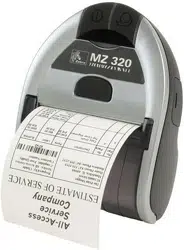Loading ...
Loading ...
Loading ...

Mobile Printing Systems
CPCL Programming Manual
Section 5
Linear Bar
Codes
pg. 5-4
Step 1: Starting at the left, including the number system character, add up all the numbers in the ODD
positions. (0 + 2+ 4 + 6 + 8 + 0 = 20)
Step 2: Multiply this sum by 3. (20 x 3 = 60)
Step 3: Starting at the left again, add up all the numbers in the EVEN positions. (1 + 3 + 5 + 7 + 9 = 25).
Step 4: Add the results from step 2 and step 3. (60 + 25 = 85)
Step 5: The checksum is the smallest number when added to step 4 will equal a multiple of ten. In our
example: 85 + 5 = 90, which is a multiple of 10. Therefore, the check digit should be 5. It is called a
modulo checksum because you take the modulo, or remainder, of the sum. For the programmers, it
is:
10 - (85 mod 10) = the checksum.
UPC-A and EAN13 bar codes can be created with and without a checksum supplied. If the programmer
supplies a checksum digit, the printer will create the bar code with that check digit, even if it is incorrect.
Most laser scanning devices will not be able to decode the bar code if the check digit is incorrect,
UPC-E bar codes, useful for small items like candy and gum, are created through the method of “zero
suppression.” For example, if you were to encode 01000000567, the resulting bar code would be a
compressed bar code that only contains the data, the compression scheme, and the checksum without all
the extra zeros. For our example, the bar code would decode to 1056707. Please refer to the UPC Symbol
Specification Manual from the Uniform Code Council for more information on zero suppression.
UPC-E and EAN8 bar codes have a few restrictions. First, the number system character must be set to
0. Number systems 1 through 9 do not support UPC-E and EAN8 bar codes and may not be decoded by
a laser scanning device. In case your application requires it, the number system may be set to something
other than 0. Second, if the programmer supplies a checksum digit, the printer will create the bar code
with that check digit, even if it is incorrect. If the check digit is incorrect, most laser scanning devices will
not be able to decode the bar code. Therefore, the programmer may send six digits (no number system,
no checksum), seven digits (number system, no checksum), or eight digits (number system and checksum)
and create a bar code.
Plus 2 and plus 5 bar code extensions are only used for periodicals and paperback books. Specifically,
the bar code specification states that the plus 2 extension should only be used for a periodical issue
number. The plus 2 and plus 5 extensions do not contain any checksum according to the bar code
continued
Loading ...
Loading ...
Loading ...
